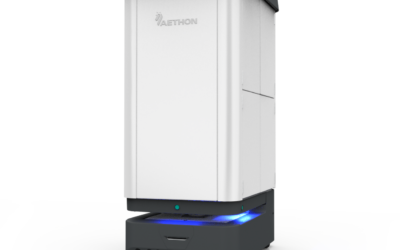“If I have seen further it is by standing on the shoulders of giants.” – Isaac Netwon
When we think about robotics, it’s not difficult to see some parallels.
The world’s first general use computer was built for a purpose that can hardly be considered “general.” ENIAC (Electronic Numerical Integrator And Computer) had been designed by the United States Army to calculate artillery firing tables. Of course, the interface was a bit clunky at the time, and it took a few decades for computer usage to become commonplace. It wasn’t until the invention of the cathode ray tube, and the subsequent invention of the television, that computer monitors were possible. It was the confluence of technologies—computing, electronic display, and countless others—that made household computing practical for the everyday consumer. And as more innovations arose, such as the mouse, microchip, or the Internet itself, widespread adoption became that much easier. Giants were born and a new industry sprung forth. When we think about robotics, it’s not difficult to see some parallels. Our own TUG autonomous mobile robots wouldn’t exist in their present form without advanced computing technology, WiFi, infrared and ultrasonic sensors, cloud computing and more. Indeed, humanoid robots represent their own kind of innovation, as their components are designed to execute physical tasks through human input. In the medical field, robots are performing complex surgeries now—but not without the direct input from several fully credentialed surgeons. The Economist ran an eight-part series in its most recent issue on service robots, including our very own TUGs, highlighting the role of supporting technologies in robotic autonomy. Sure, TUGs may be able to independently navigate the complex blueprint of a hospital floor, but they can also be summoned wirelessly via smartphone and can be supported, monitored and controlled over the cloud if unforeseen circumstances arise. Robots aren’t perfect, yet—but we can get pretty close when we combine our technologies with other innovations, requiring minimal human input. Over 150 hospitals today use TUGs to deliver essential materials directly to the patient’s bedside, completing more than 50,000 successful deliveries per week, saving hospitals costs, saving employees’ time, and increasing patient satisfaction. But none of this would be possible without existing infrastructure—elevators for the TUGs to ride from floor to floor, WiFi for relaying information to and from our command center, and even utilitarian automatic door openers. Here at Aethon, we’re always aiming to “see further,” especially when it comes to improving our product line. Just like our robot helpers can “fill in the gaps” of your staffing model, existing technologies can serve as helpers of the robots themselves. It’s an empowering philosophy—we strive to stand on the shoulders of giants. And new giants are always in the making.




